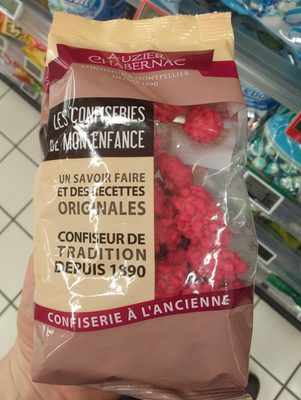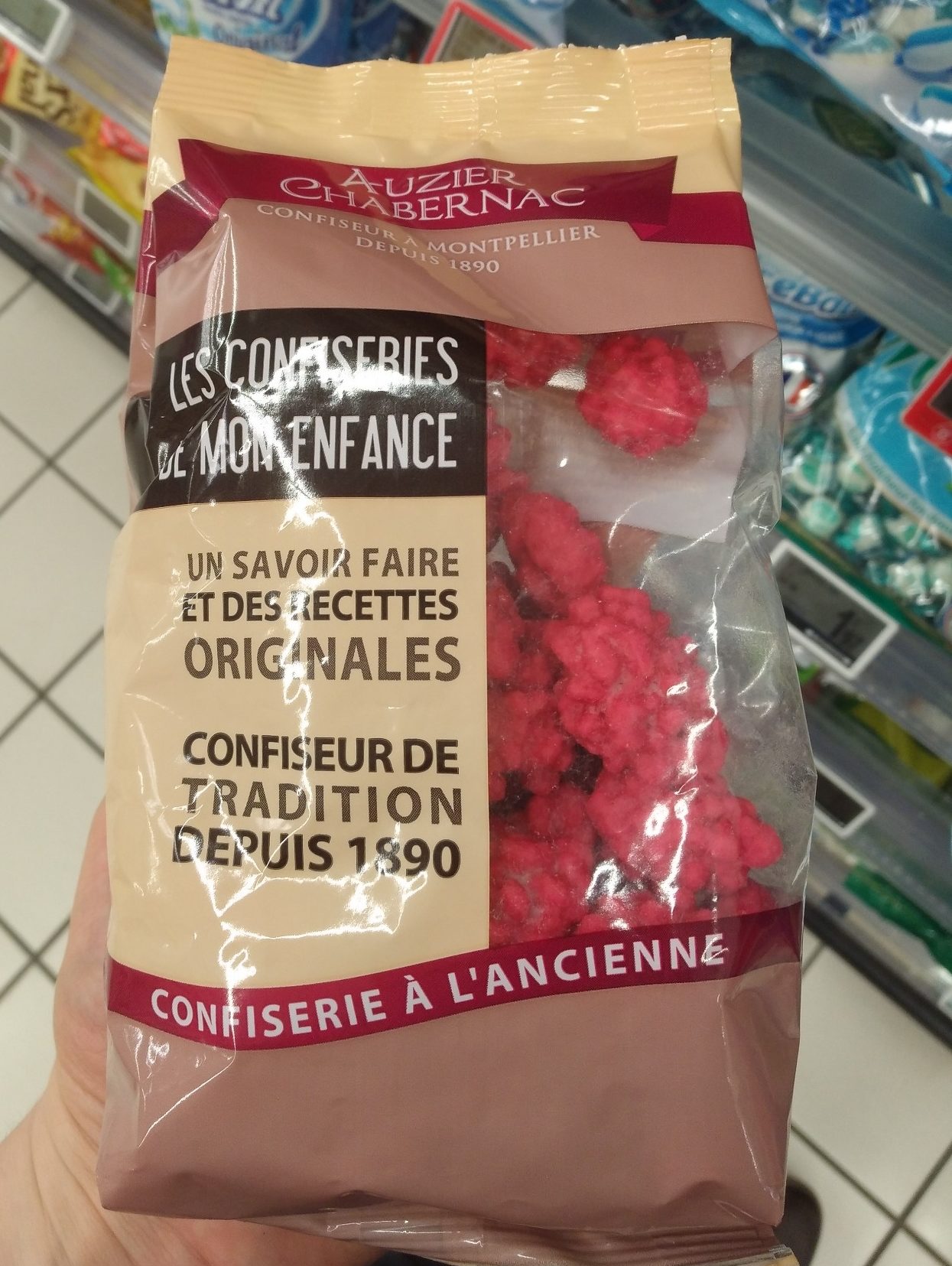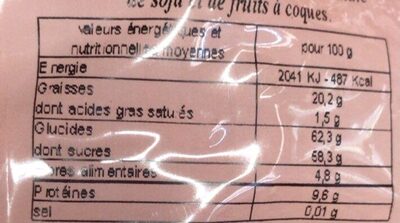Pralines rouges aux amandes - Auzier Chabernac - 300 g
This product page is not complete. You can help to complete it by editing it and adding more data from the photos we have, or by taking more photos using the app for Android or iPhone/iPad. Thank you!
×
Barcode: 3352750100132 (EAN / EAN-13)
Common name: Pralines rouges aux amandes
Quantity: 300 g
Brands: Auzier Chabernac
Categories: Plant-based foods and beverages, Plant-based foods, Snacks, Sweet snacks, Confectioneries, Nuts and their products, Nut confectioneries, French pralines, fr:Pralines rouges
Labels, certifications, awards:
Green Dot, Made in France
Manufacturing or processing places: France
Traceability code: EMB 34255B - Saint-Gély-du-Fesc (Hérault, France)
Stores: Leclerc, carrefour.fr
Countries where sold: France
Matching with your preferences
Environment
Packaging
Transportation
Report a problem
Data sources
Product added on by kiliweb
Last edit of product page on by packbot.
Product page also edited by beniben, driveoff, openfoodfacts-contributors, quechoisir, sebleouf, yuka.DaxzFtqnBZcPEcTYwdgb-T-5GfXwE855M0wToQ, yuka.UktNTURaUWpwNkFwbHR0dTV3TDR5K2hUNjdDeFprYnZHdlFVSVE9PQ.










